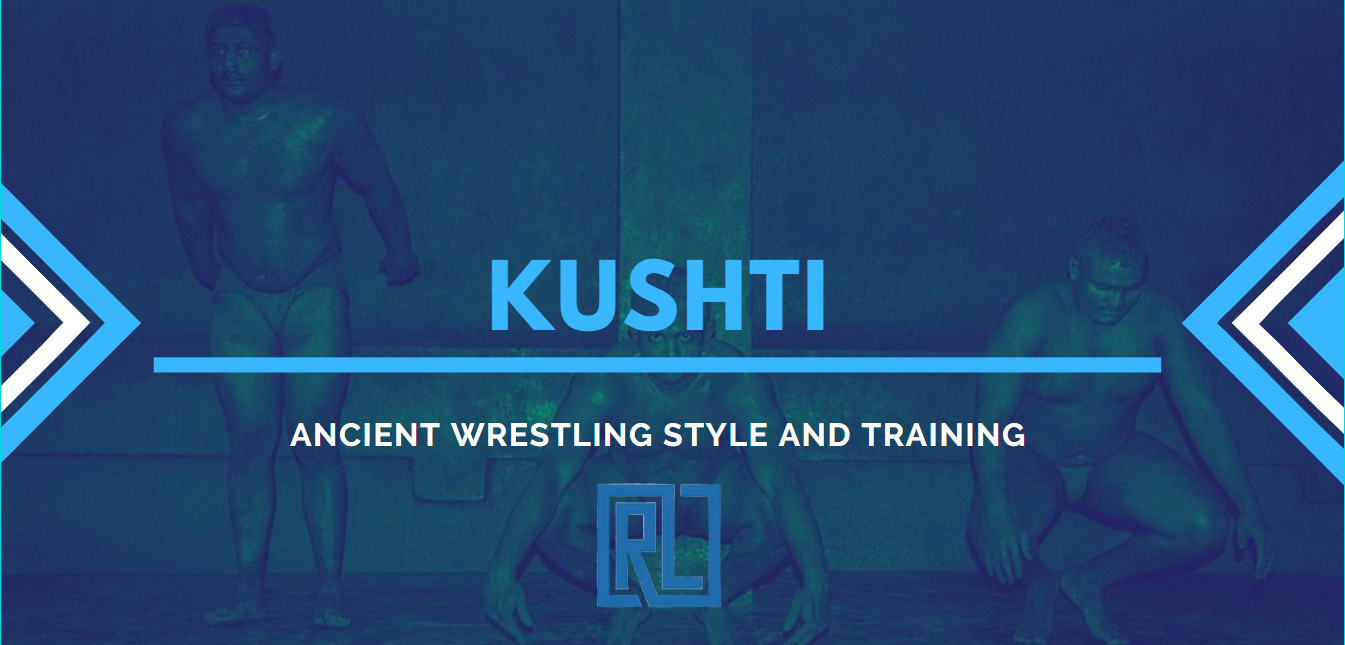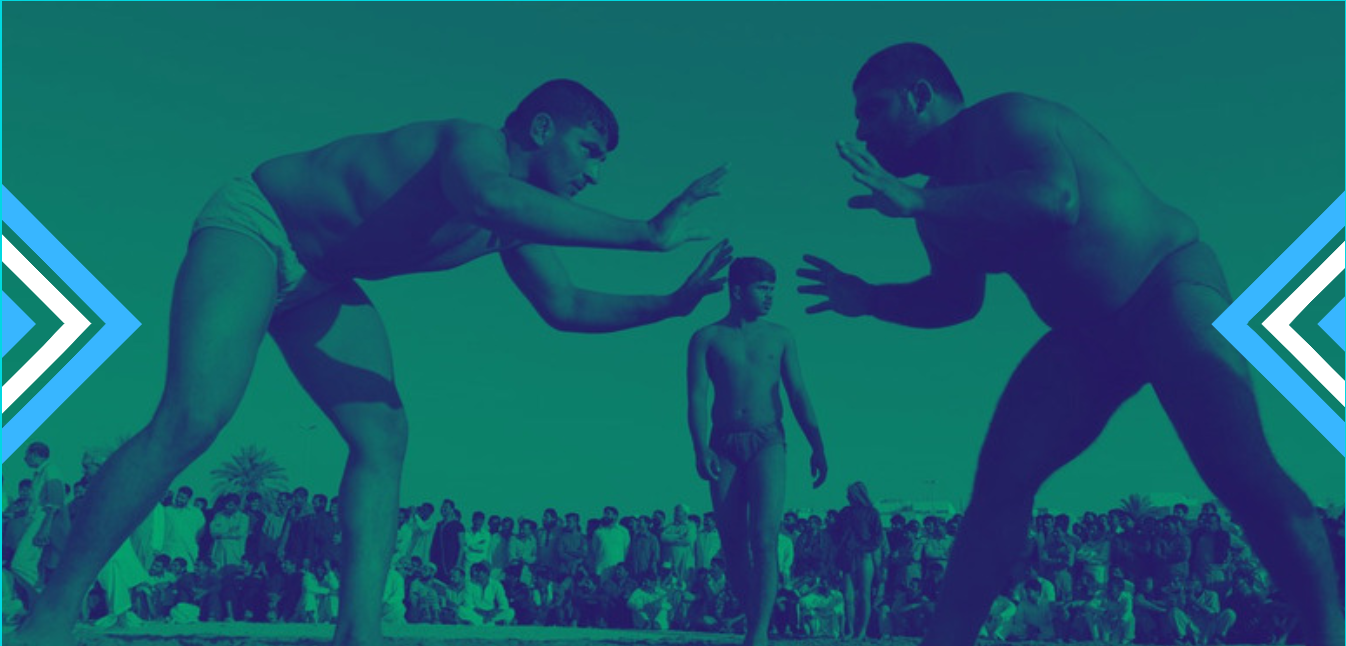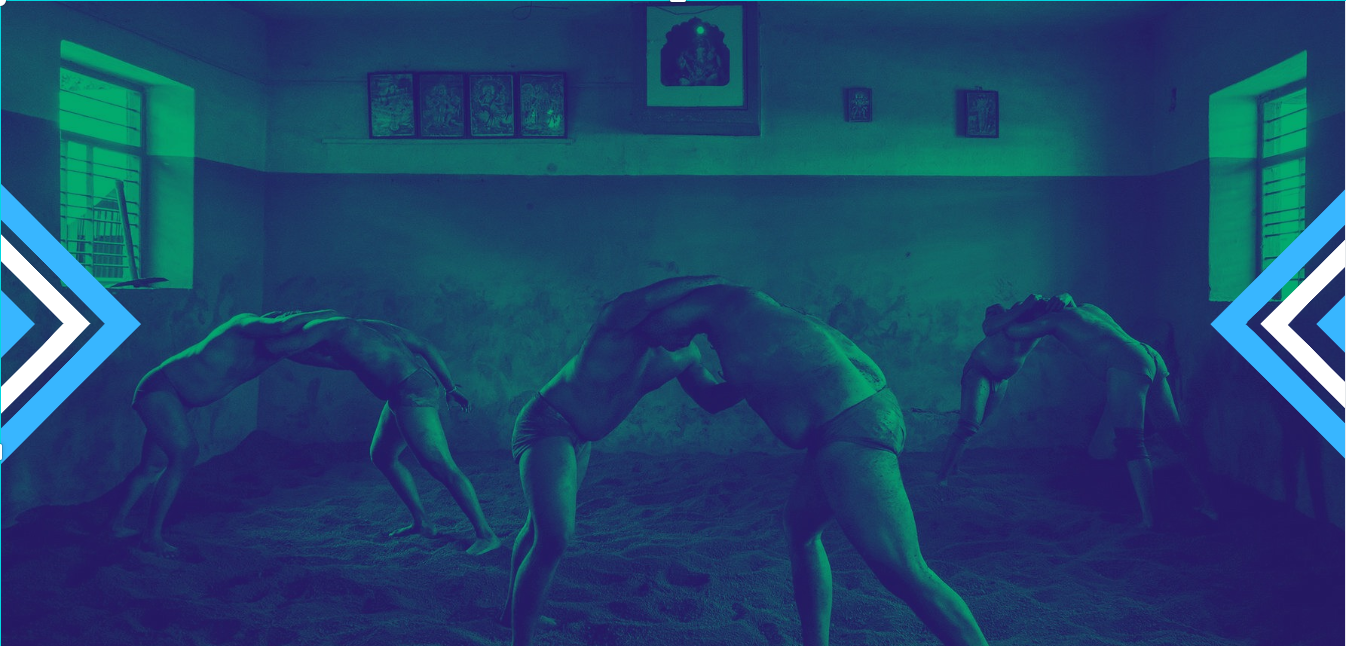|
(Disclaimer: This is not professional or legal advice. If it were, the article would be followed with an invoice. Do not expect to win any social media arguments by hyperlinking my articles. Chances are, we are both wrong).
When I started to build my shadow wrestling program, I looked to as many teachers and practices that I could find. One such discipline that lends itself well to our program was Hindu-Kushti wrestling. The ancient traditional art of Indian wrestling, known as kushti ('wrestling ground with hallowed earth'), still thrives in wrestling gyms, or akhara, scattered around India. Akhara is one of India's few places where Hindu men from different castes are considered equals. Much like a gym, local men go to train at their akhara using a range of simple but effective equipment. Most akharas are associated with a guru, called a Palawan. Aside from intense bodybuilding, practitioners of kushti wrestling also traditionally emphasize a life of discipline and celibacy. Wrestlers live and train together and have strict rules. The Palawan may not drink, smoke, or have sex. Kushti is not just a sport or an art; it is an ancient subculture.
They are practitioners of kushti, a style of mud-clay wrestling that dates to when Mughal emperors held sway over this vast fertile plateau in western India. In Kolhapur, a prosperous agricultural city ringed by sugarcane farms and factories, boys as young as 8 come to train in the clay — a mixture of dirt, yogurt, clarified butter and turmeric powder, turned over with a shovel until it is red and chunky-soft.
Even in fast-changing India, the sport remains a wellspring of personal power, family pride, and regional identity. But as modernity sweeps India and Western games like cricket becomes more popular, some akhara is now being abandoned. These days, not many people traditionally practice kushti, directly on mud floors, and many are more interested in practicing this form of wrestling using a mat or turf. However, even though several prominent, government-run gyms have already switched to cloths and cater instead for Olympic-style wrestling, many of the akhara in the smaller villages and more traditional towns are still maintaining the old ways.
History
The Mughals who conquered part of India in the 16th century and the Maratha warrior-princes who supplanted them each promoted kushti. It blended a form of ancient Indian mud-fighting with Persian martial arts. The sport's golden age in Kolhapur began in the late 19th century when Shahu Maharaj, ruler of what was then a princely state, held contests and invited competitors from across British India. The ancient Indian form of wrestling is called Malla-yuddha. Practiced at least since the 5th century CE, described in the 13th-century treatise Malla Purana, it was the precursor of modern kushti. In the 16th century, northern India was conquered by the Central Asian Mughals, who were of Turko-Mongol descent. Through the influence of Iranian and Mongolian wrestling, given time, the local Malla-yuddha was supplanted by Persian Kushti. Interestingly, the aspects of Malla-yuddha survived in the culture of the wrestling academy: Students are expected to be vegetarian, cook, take care of the facility, and be celibate. Mughal-era wrestlers sometimes even wore bagh naka on the one hand, in a variation called naki ka kushti or "claw wrestling." During the late 17th century, Ramadasa traveled the country, encouraging Hindus to physical activity in homage to the great god Hanuman. Maratha rulers supported kushti by offering large sums of prize money for tournament champions. It was said that every Maratha boy could wrestle, and even women took up the sport. During the colonial period, local princes sustained the popularity of kushti by hosting matches and competitions. Wrestling was the favorite spectator sport of the Rajputs and was said to look forward to tournaments "with great anxiety." Every Rajput prince or chief had a few wrestling champions to compete for his entertainment. The greatest wrestling centers were said to be Uttar Pradesh and the Panjab. In 1909, a Bengali merchant named Adbul Jabbar Saudagar intended to unite the local youth and inspire them in the anti-British struggle against the colonists through a display of strength by holding a wrestling tournament. Known as Jabbar-er Boli Khela, this competition has continued through independence and the subsequent partition.
Training
Although wrestling in the Indian subcontinent saw changes in the Mughal era and the colonial period, the training regimen has remained the same for over 150 years. Fledgling wrestlers may start as early as 6, but most begin formal training in their teens. They are sent to an akhara or traditional wrestling school where they are put under the local guru's apprenticeship. Their only training attire is the loincloth. Physical training is meant to build strength and develop muscle bulk and flexibility. Exercises that employ the wrestler's body weight are the practice and the use of another person's body weight to add resistance to such activities. Exercise regimens may employ the following weight training devices:
Exercise regimens may also include rope climbing, log pulling, and running. Massage is regarded as an integral part of a wrestler's exercise regimen. Typical training day will go as follows:
Diet The kushti daily diet is a paleo dream: 200 almonds, seven to 10 eggs, a pound of mutton, several bananas, some green vegetables and a half-pound of clarified butter, or ghee. They refrain from alcohol and tobacco, in keeping with the near-asceticism expected of a serious kushti wrestler. According to the Samkhya school of Hindu philosophy, everything in the universe—including people, activities, and foods—can be sorted into three gunas: sattva (calm/good), rajas (passionate/active), and tamas (dull/lethargic). As a vigorous activity, wrestling has an inherently rajasic nature, which pehlwan counteract through the consumption of sattvic foods. Milk and ghee are regarded as the most sattvic of foods and, along with almonds, constitute the diet's holy trinity. A typical snack for pehlwan is chickpeas that have been sprouted overnight in water and seasoned with salt, pepper, and lemon; the water in which the chickpeas were grown is also regarded as nutritious. Ideally, wrestlers are supposed to avoid sour and excessively spiced foods. Rules Wrestling competitions known as dangal or kushti are held in villages and are variable and flexible. The arena is either a circular or square shape, measuring at least fourteen feet across. Rather than using modern mats, South Asian wrestlers train and compete on dirt floors. Before training, the floor is raked of any pebbles or stones. Buttermilk, oil, and red ochre are sprinkled to the ground, giving the dirt its red hue. Water is added every few days to keep it at the right consistency, soft enough to avoid injury but hard enough to impede the wrestlers' movements. Every match is preceded by the wrestlers throwing a few handfuls of dirt from the floor on themselves and their opponent as a form of blessing. Despite the marked boundaries of the arena, competitors may go outside the ring during a match with no penalty. There are no rounds, but the length of every bout is specified beforehand, usually about 25–30 minutes. If both competitors agree, the length of the match may be extended. Match extensions are typically around 10–15 minutes. Unlike mat-based wrestling, there is no point scoring system; a win is achieved by pinning the opponent's shoulders and hips to the ground simultaneously. However, victory by knockout, stoppage, or submission is also possible. In some variations of the rules, only pinning the shoulders down is enough. Bouts are overseen by a referee inside the ring and a panel of two judges watching from the outside. Training Videos Here are a few videos I collected to help me tailor my program:
3 Comments
John
5/27/2021 11:08:00 am
super intersting article wow
Reply
Mujahid Al- Deen
6/26/2022 12:22:14 pm
Very nice article with some nice historical content. My only criticism would be that you only mention India's Hindu community as the ones who take part in kushti. Muslims of India also take part in kushti, the most famous being the Great GAMA Gulam Mohammad
Reply
Hiron
7/16/2024 09:01:29 pm
This article is full of factual inaccuracies . By reading this it becomes very clear the author is very ignorant and also kinda racist .
Reply
Leave a Reply. |
AuthorRyan Lancaster wears many hats. Dive into his website to learn about history, sports, and more! Archives
July 2024
Categories |





 RSS Feed
RSS Feed